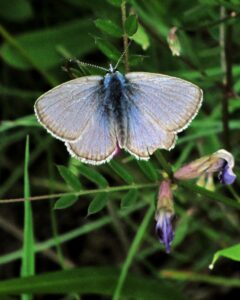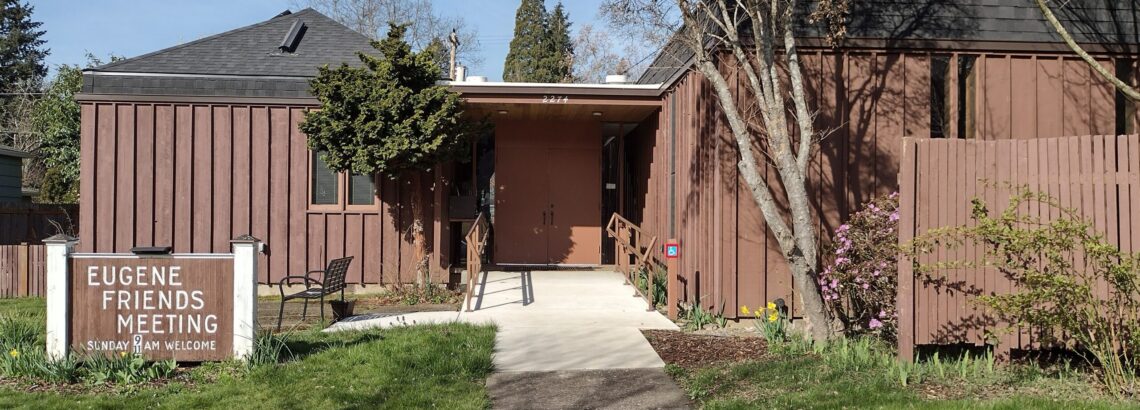
The concept of ‘unity with nature’ is still unsettled in Friends’ minds. Our commitment to the exploration of this concept … is alive and growing. But how to nurture it? Where will it lead us? Is it an aspect of our deepest spiritual selves, to be integrated into our whole being by quiet contemplation of wilderness and the fascinating intertwining of God’s living Creation? Is it the motivating force behind our action to preserve the wilderness and to adopt sustainable lifestyles? Or is it both at once, like most Quaker Testimonies?
~Beyond Stewardship, Pacific Yearly Meeting Committee on Unity with Nature
Native pollinators are indigenous to a specific geographic area, and have co-evolved with the native flowers of that area. We have approximately 150 species of native butterflies, and 500 species of native bees living in Oregon, and each requires flowers to which they are adapted. Honeybees, on the other hand, are a non-native domesticated species imported from Europe almost 400 years ago. They are “generalists,” and use a wide variety of flowers, but they are often much less effective at pollinating native plants.
Native bees are far more effective at pollinating than honey bees on a per bee basis:
- Native bees visit flowers in wetter and colder conditions than honeybees do. As a result, many native species forage for longer periods of time — earlier and later in the day.
- Many smaller native bees also have shorter foraging distances, which makes a healthy nearby population more “faithful” to your gardens’ crops.
- Finally, the effectiveness of honeybees as pollinators has been shown to increase significantly when they’re in the presence of native bees by causing them to move between plants more frequently.
Other Oregon pollinators include native beetles, flies, hummingbirds, and bats!
Queries:
How can we be welcoming and inclusive to all creatures?
What do the pollinators need from us in order to thrive?
What we can do:
- Get to know the pollinators that visit your home; take note of what they look like and what flowers they frequent.
- Consult a field guide or web site to identify your pollinator visitors, so you can greet them by name. (See Oregon butterflies and Oregon Bee Guide)
- Find out what you can offer them for hospitality (food and water), and sanctuary (shelter and nesting spots).
- Learn more about the risks of pesticides for pollinators.



I am enjoying a visit to a small town in southern Vermont; I am enjoying walking in the forest and fields taking in the Green Mountain air and the changing colors. My friend that I am visiting has devoted about half of her 2 acre parcel to ” wilding”. She has enjoyed the new animals that visit and the flowers and plants that have come into her yard.
Permalink